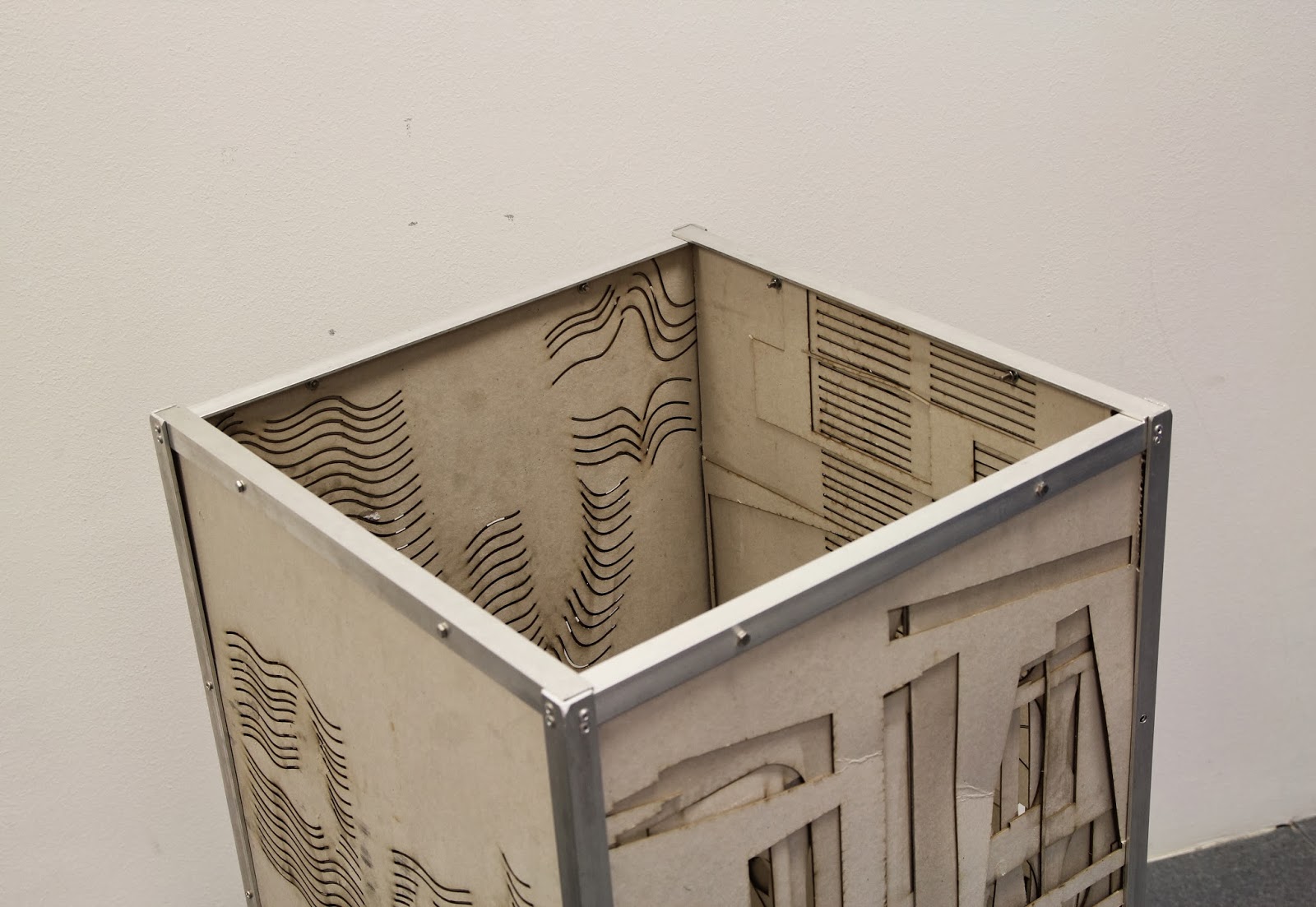Refuse, Reduce, Reuse, Recycle – four
things that most architecture students subscribe to, but find very
hard to put to practice in the architecture studio.
This box-on-wheels was a personal
experiment to see how far one could push the term 'reuse' in the
context of the studio. Most of our models are built using cardboard
parts that are precision cut by a laser. However, weird geometries
combined with time pressure limit how much cardboard we can save by
arranging the parts efficiently.
Inspired by the use of cardboard as
structural element in product design (furniture, bicycles), I came up
with the idea of laminating/gluing multiple sheets of scrap, lasercut
cardboard sheets together to form a relatively strong board which
could be reused. In addition, I also believed that the interesting
shapes and uniqueness of each board would lend an aesthetic touch to
the final product.
The box would comprise of an aluminum
frame with wheels and the sides and bottom of the box would be made
out of up to 8 layers of laminated scrap cardboard. Scrap cardboard
was plentiful in the studio and I chose pieces that still had a
relatively large amount of cardboard on them. The boards with more
interesting designs were earmarked to form the front and back of the
laminated board. Gluing the boards was a messy business that drew the
curiosity of my studio mates!
The final product was rather heavy. The
laminated cardboard turned out to be relatively solid as a material,
and I believe that the back and sides will hold up to anything that
is not too heavy (3kg on each side, 40kg spread out on the bottom,
which has bracing). As of now, the box would be used as a protective
container to store my architecture posters!

























